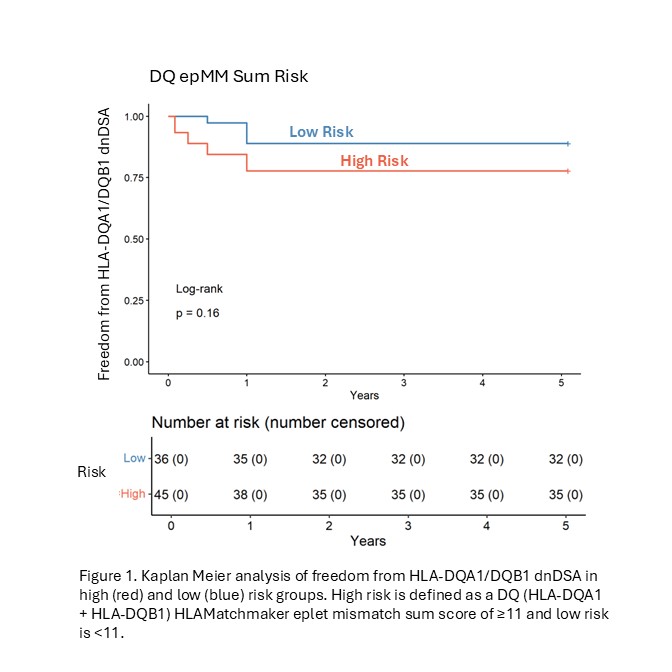head and Associate Professor
Department of Pediatric Nephrology
Smt. GR Doshi and Smt. KM Mehta Institute of Kidney Diseases and Research Center, Gujarat university of Transplantation Sciences
Correlation between Human Leukocyte Antigen (HLA) Eplet Mismatch and Denovo Donor Specific Antibodies (dnDSA) development, in paediatric Kidney Transplant Recipients (KTR): A retrospective cohort from a single Indian centre
Kinnari Vala1, Shahenaz Kapadia1, Disha Bhatt1, Anshuman Saha1, Divyesh Engineer2, Varsha Trivedi3, Mitchell Ellison4, Qingyong Xu4.
1Pediatric Nephrology and Kidney Transplantation, Smt. GR Doshi and Smt. KM Mehta Institute of Kidney Diseases and Research Center, GUTS, Ahmedabad, India; 2Nephrology, Smt. GR Doshi and Smt. KM Mehta Institute of Kidney Diseases and Research Center, GUTS, Ahmedabad, India; 3Transplant Immunology, Smt. GR Doshi and Smt. KM Mehta Institute of Kidney Diseases and Research Center, GUTS, Ahmedabad, India; 4Pathology, University of Pittsburgh Medical Center, pittsburgh, United States
Introduction: Kidney transplantation is the preferred treatment for children with ESKD, but long-term graft survival remains challenging. Donor-specific antibodies (DSAs) are a key risk factor for late allograft dysfunction. Beyond conventional HLA matching, HLA eplet mismatches, especially at HLA-DQ and HLA-DR loci, have been linked to increased dnDSA formation and rejection in adult patient but such as report is scarce in paediatric cohort.
Aims: To determine correlation between HLA class I and II eplet Mismatches, dnDSA development in single centre cohort of paediatric KTRs.
Methodology: Children under 18 years who underwent kidney transplantation at our center from September 2016 to June 2024 were included. Exclusion criteria were pre-transplant DSA, prior desensitization, multi-organ transplantation, missing HLA or clinical data. Nine loci (HLA-A/B/C, -DRB1/3/4/5, -DQA1/-DQB1) high-resolution typing for 26/81 cases that lacked typing for donor or recipient, an in-house imputation pipeline was used to obtain high resolution typing results. For all included cases, dnDSA at 3, 6, 12 months, 3 and 5 years were analysed. HLA molecular mismatch (HLAMM) analysis, including eplet mismatch sum and single-molecule eplet mismatch, was performed using HLA Matchmaker v4.0, with risk categorization based on established cut-offs. Fishers exact test and log-rank test were used to assess variable associations and time to event data, respectively.
Results: After excluding cases with insufficient clinical details or meeting exclusion criteria, 81 out of 110 children were included in the analysis. Using cut-offs established by Wiebe and Nickerson for HLAMM risk assessment, we identified a strong association between HLA-DQA1/DQB1 eplet mismatch sum score (high risk: ≥11 epMM) and dnDSA at three- and six-months post-transplant (OR=6.33, Fisher’s p=0.07). We also observed lower freedom from DSA in the high-risk group (77.8%) compared to the low risk group (88.9%, log-rank p = 0.16).

Conclusion: In a cohort of 81 pediatric kidney transplant patients we show that HLA-DQA1/DQB1 eplet mismatch sum score is associated with early dnDSA development, similar to the previous report in adult kidney cohort.
